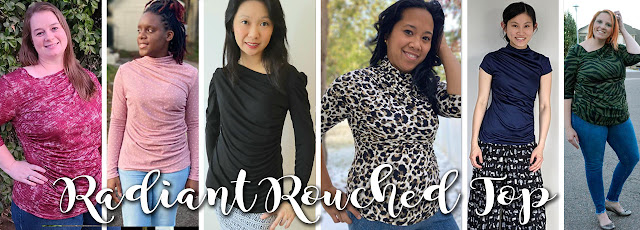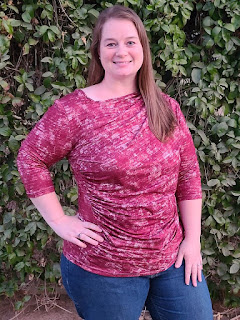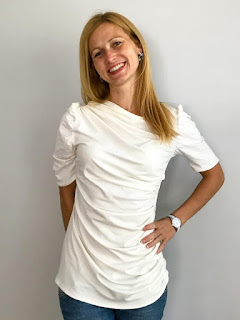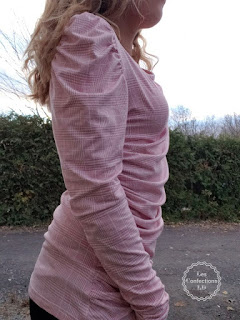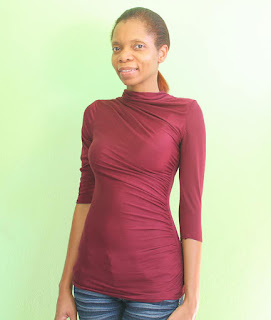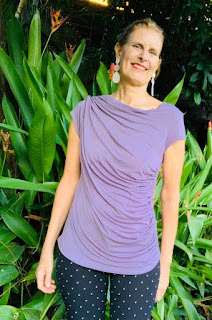We have been so excited to introduce the brand new Radiant Rouched Top to you this week! This is such a fun and unique pattern were lots of versatility and visual punch. Plus it isn't hard to sew - WIN!
Throughout the week we've been taking a look on FB at the different Necklines and Sleeve options, but today I wanted to take some time to really look at the fabric options for this pattern. We have lots of gorgeous tester images, but it quickly become apparent that different fabrics sew up with different finished looks. This adds another wonderful layer of versatility to this pattern, but can become a bit confusing if you are really going for a specific look.
While this blog post will not cover every possible fabric out there, we will touch on some of the fabrics that worked best in testing and what some of their commercial contemporaries are to help give you a bit more guidance as you are picking fabric for this pattern.
Let's start with where the pattern instructions start:
Main Fabric:
Stable light to mid weight Knit Fabrics with 30% or more stretch.
-Cotton Lycra, ITY, Jersey, Interlock, Slub knits, stable Ribbed Knit, and Single & Double Brushed Poly will give you the best results. (The brown cover image is a Cotton Lycra)
-Rayon Blends will also work, but it is in their nature to grow and not have the best recovery, so the overall fit will be looser and the garment will not hold the drape quite as well. (The purple cover image is a Rayon Blend)
Take note of the very first word - Stable. We're looking for fabrics that keep their shape and when stretched have pretty good recovery. The more stable and the stronger the recovery of your fabric, the better your finished garment will fit and hold the overall shape and the structural look of all the gathers.
While this pattern needs horizontal stretch, vertical stretch is much less important. Feel free to play with fabrics with less vertical stretch as you explore your options.
Lets take a look at some of the fabrics that fit this bill perfectly in testing:
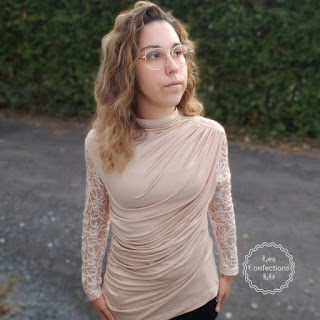 |
| Poly Spandex Body and Stretch Lace Sleeves |
 |
| Miliskin |
 |
| ITY |
 |
| Poly Tricot Body, Cotton Tricot Sleeves |
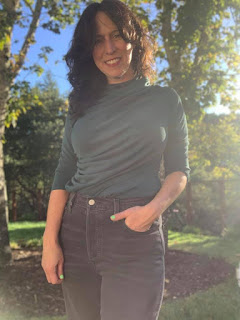 |
| Jersey Coupro |
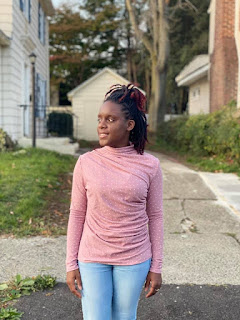 |
| Ribbed Knit |
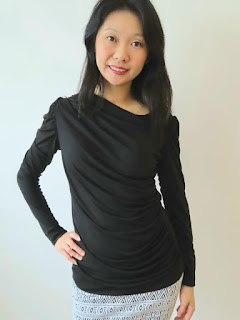 |
| Stretch Crepe |
- Ponte - It is simply too heavy of a fabric for this pattern
- Waffle Knit - not stable enough and has poor recovery
- Most Sweater Knits - they simply do not have the stability or recovery to work in this pattern.
- Chunky Chenille or Sugar Pop Fabrics - these are simple too thick to handle the amount of gathering in this pattern.
- Any fabric that is not stable and has poor recovery! But how do you tell??? Take a swatch of your fabric and stretch it - does it bounce back to its original shape or pretty close? Great, that fabric has good recovery. Hold up a larger piece of your fabric...is it maintaining its original shape, of can you feel it weighing down and growing longer as you hold it up? If it maintains it's shape pretty well then it is a stable fabric.

